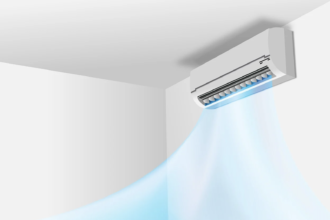Winter in Lake Forest can be a beautiful time, with snow-covered landscapes and festive cheer. However, the dropping temperatures also bring the risk of frozen pipes, a common issue for many homeowners. Frozen pipes can disrupt daily life, leading to a lack of water and potential damage if not addressed promptly. Understanding how to prevent and manage frozen pipes is essential for maintaining a safe and comfortable home during the cold months.
This post shares practical steps to prevent pipes from freezing. Additionally, we’ll discuss the importance of seeking help from a plumber in Lake Forest in severe cases to prevent pipe bursts and extensive water damage.
Preventing Frozen Pipes
Insulate Your Pipes
One of the most effective ways to prevent frozen pipes is to insulate them. This is particularly important for pipes located in unheated areas such as basements, attics, and garages. Pipe insulation materials, such as foam rubber or fiberglass sleeves, are readily available at most hardware stores. Proper insulation keeps the pipes warmer, reducing the risk of freezing.
Keep the Heat On
Maintaining a consistent indoor temperature is crucial during winter. Even if you plan to be away from home for an extended period, ensure your heating system remains on. Set the thermostat to at least 55 degrees Fahrenheit. This helps keep the pipes warm and prevents them from freezing.
Allow Faucets to Drip
Allowing faucets to drip slightly during extreme cold can prevent pipes from freezing. This is especially effective for faucets connected to pipes that run through unheated or exterior areas. The constant movement of water, even if it’s just a trickle, can prevent the pipes from freezing solid.
Seal Cracks and Openings
Inspect your home for any cracks or openings where cold air might enter. Pay particular attention to areas around windows, doors, and vents. Sealing these gaps with caulk or weatherstripping can help keep the cold air out and maintain a warmer environment for your pipes.
Addressing Frozen Pipes
Identify the Frozen Pipe
If you suspect a pipe is frozen, the first step is to identify the affected area. Signs of a frozen pipe include frost on the pipe’s exterior, unusual noises when you turn on the tap, or no water flow at all. Once identified, you can take steps to thaw the pipe safely.
Thawing the Frozen Pipe
Start by opening the faucet connected to the frozen pipe. This allows water to flow through and helps relieve pressure in the system. Next, apply heat to the frozen section of the pipe. You can use a hairdryer, heating pad, or towels soaked in hot water. Never use an open flame or blowtorch, as this can damage the pipe or cause a fire hazard. Gradually warm the pipe until water begins to flow again.
When to Seek Professional Help
Severe Cases and Potential Bursts
In severe cases where pipes remain frozen despite your efforts or if you notice signs of a burst pipe, it’s crucial to seek professional help. Burst pipes can lead to significant water damage and costly repairs. A licensed plumber in Lake Forest has the tools and expertise to handle these situations safely and efficiently.
Preventing Water Damage
Professional plumbers can also help prevent future issues by identifying and addressing vulnerable areas in your plumbing system. They can provide comprehensive solutions, such as advanced insulation techniques and rerouting pipes away from unheated areas. Investing in professional services can save you time, money, and stress in the long run.
Dealing with frozen pipes in winter requires a proactive approach to prevention and a careful response when issues arise. By insulating your pipes, maintaining a consistent indoor temperature, and addressing frozen pipes promptly, you can protect your home from the damaging effects of winter weather. In severe cases, don’t hesitate to call a professional plumber to ensure your plumbing system remains in good working order. Stay warm and safe this winter in Lake Forest!












